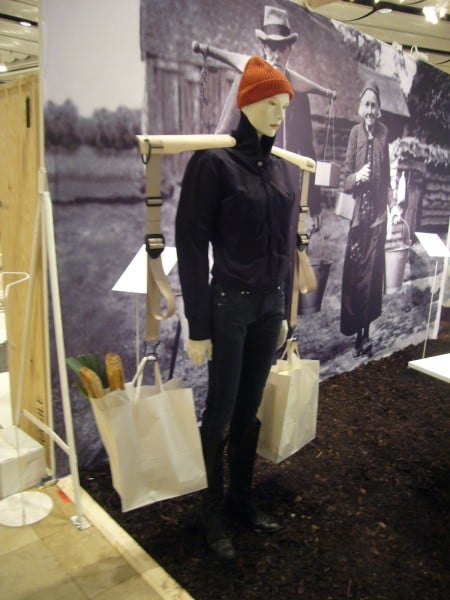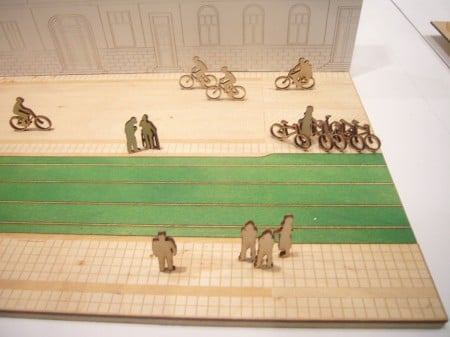
February 18, 2009
Swedish Wish
Projects from industrial design students present a future with zero emissions
One of the best school projects I’ve seen in years was the work of fourth-year industrial design students from Lund University who exhibited their school project at the recent Stockholm Furniture Fair. How To Get Ourselves and Stuff Around with Zero Emissions proposed some ways that we could change our living arrangements so that we reduce our transportation and the need to travel.
What made this project so appealing was that the students designed individual objects that fit into the context of an improved transportation solution for the Lund area by increased use of electric public transportation, walking, and cycling. Solutions ranged from a feeding station for butterflies to a fat separator as well as an improved neighborhood transportation network.
(Photos: Paul Makovsky)
More on the projects after the jump.
1. Yoke by Erik Abelin
Critical of those who use their car to get their groceries a few blocks from where they live, student Erik Abelin updated the traditional yoke as a way to challenge people to think about the way they eat and how they get their groceries.
2. The Butterfly Hotel by Elina Westman
As a way to increase the butterfly population in Sweden, which play an important role in pollinating all sorts of plants, Westman designed this butterfly feeding station as a way to create awareness about butterflies as well as create a shelter and place to feed and nest for butterflies.
3. Beehive by Annalisa Koch and Juliane Aufdembrinke
Since a third of our food is dependant directly or indirectly on bee pollination, Koch and Aufdembrinke created a beehive, made of cork and larch, updated with a sleek and stripped-down design, as a way to supply nutritious food for our gardens.
4. Bus Rope by Daniela M. Paredes Fuentes
This hemp rope is a fun way for kids to get to their bus by having them hold on to a smaller rope that has a handle with two bells. When the child is holding the bells, it doesn’t sound, but when the handle is not being held, the rope begins to swing and the bell begins to sound, alerting the adult supervisor. The rope, also reduces the number of adults need to supervise the children while walking to school.
5. Fat Separator by Verena Knaust
The Fat Separator uses gravity to separate greasy oil from water, which can then be skimmed off, collected and then disposed, and recycled. A simple turning motion will unlock the oil canister when it needs to be taken off to recycling.
6. Transport Systems
Lena Zinzer, Daniela Paredes Fuentes, Jonas Waglund, and Susanne Bargi looked at ways to develop a network of roads that cater to a population without cars such as light rail, trams, biking, and walking. The proposal included a bike road that would have a protective roof for all-weather cycling and pavements designed without steps or edges for universal access. To differentiate the bike lanes from the walkways they developed a street system with a variation in paving and tactile step stones, making the streets safe for people with reduced eye sight, using regional and durable materials.












